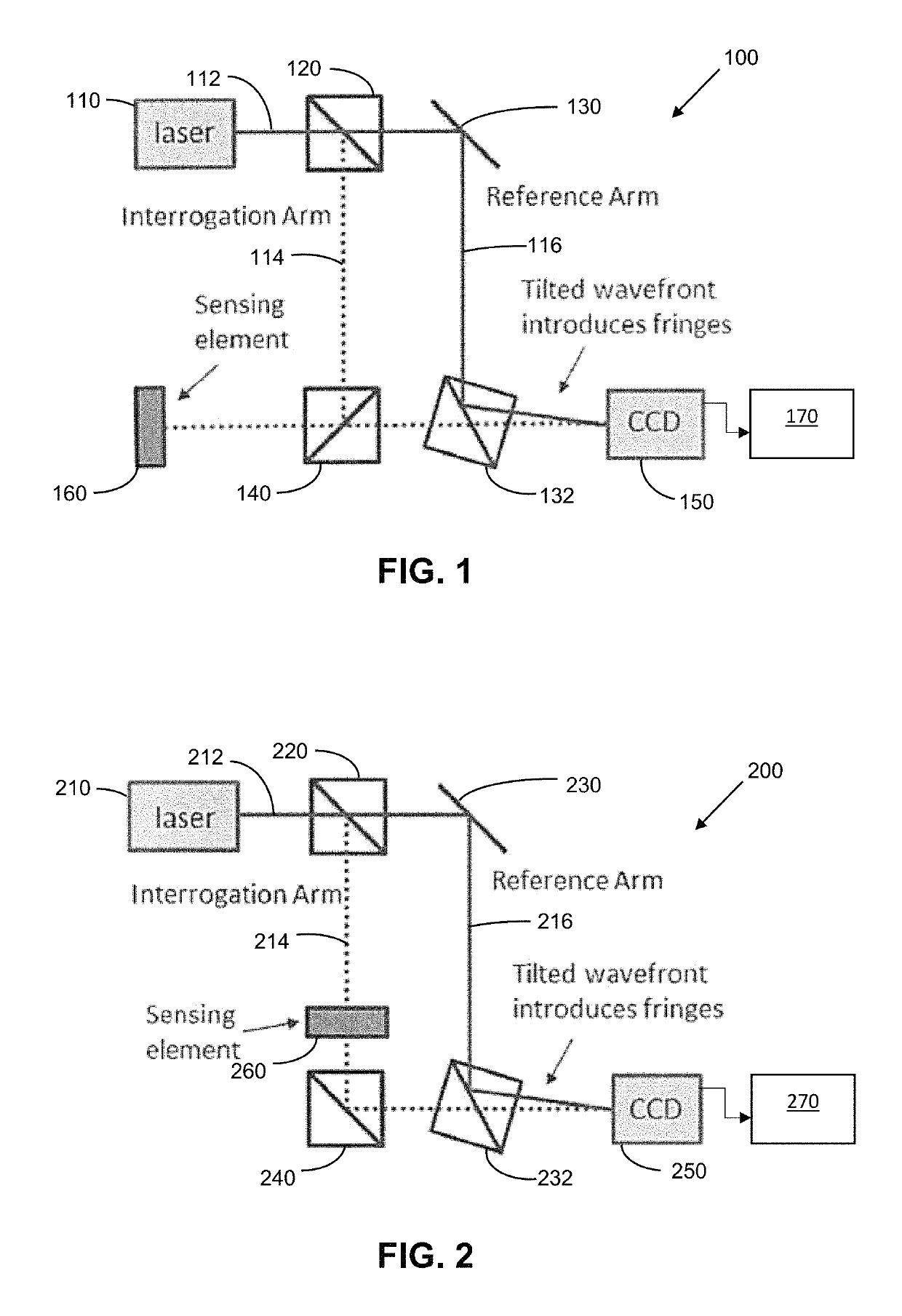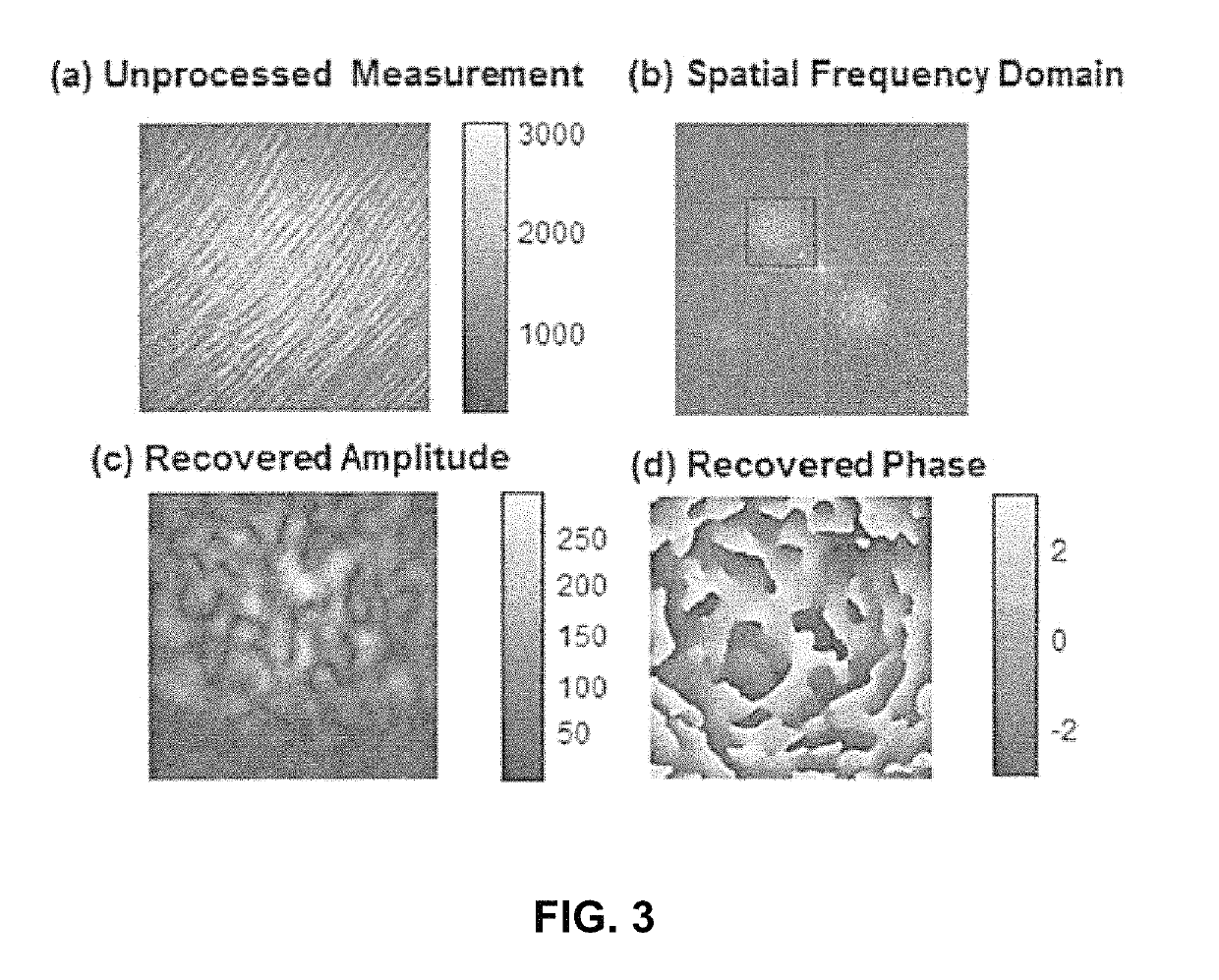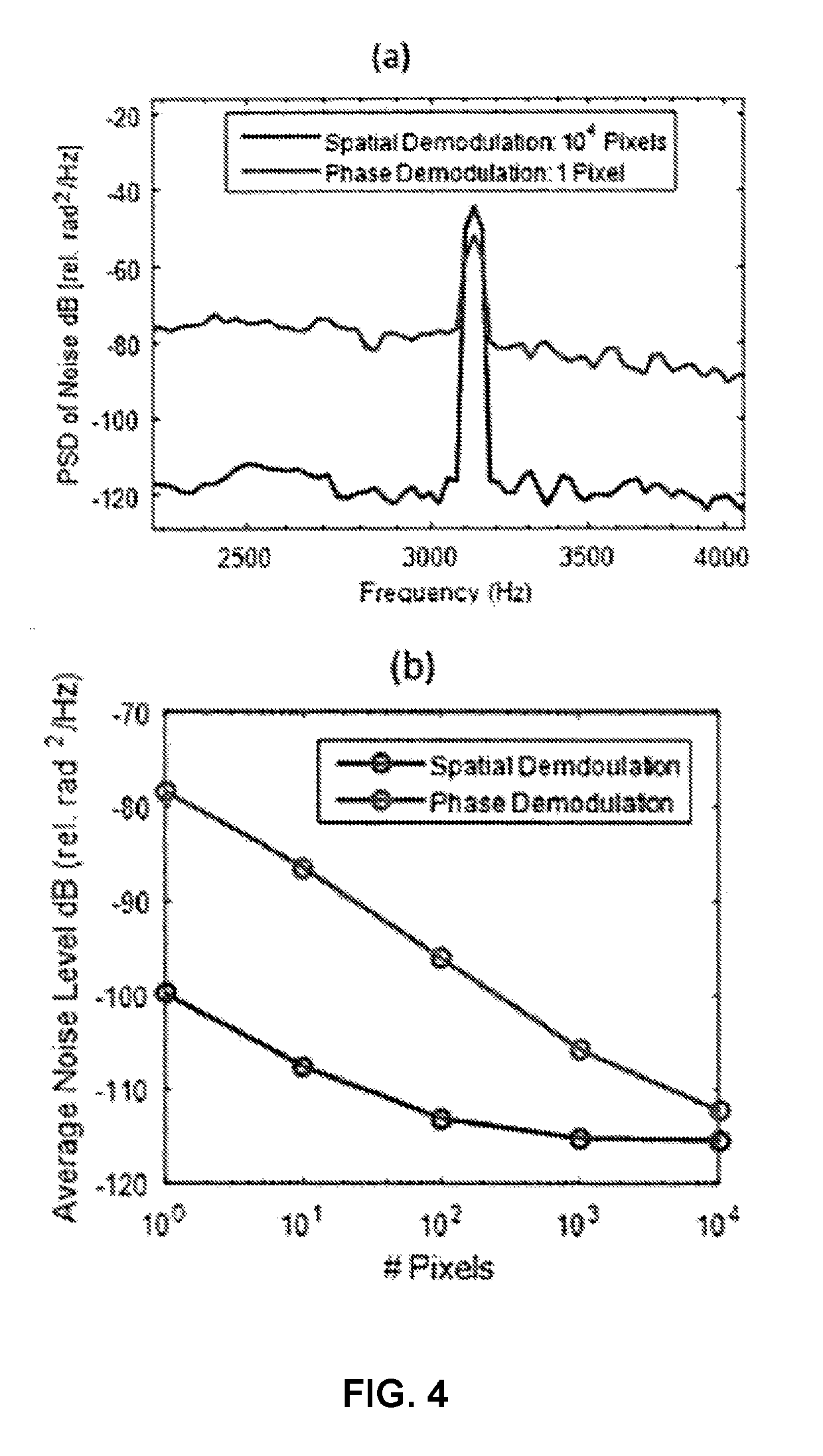Advantages of spatial demodulation in interferometric optical sensing applications
a spatial demodulation and optical sensing technology, applied in the field of optical sensing, can solve the problems of reducing the sensitivity of doppler noise, affecting the phase and frequency modulation scheme, and affecting the detection bandwidth of approaches, so as to reduce the incoherent noise level of a measurement and reduce the incoherent noise
- Summary
- Abstract
- Description
- Claims
- Application Information
AI Technical Summary
Benefits of technology
Problems solved by technology
Method used
Image
Examples
Embodiment Construction
[0033]A wide range of optical sensing systems rely on the precise measurement of the optical phase delay of an interrogation beam. Exemplary embodiments of the invention measure the optical phase using a spatial demodulation scheme based on off-axis holography, resulting in significant advantages in terms of both sensitivity and bandwidth. Off-axis holography relies on a digital camera to record the interference pattern formed between the interrogation beam and a reference beam which are combined at a fixed angle (hence the name “off-axis”). The optical phase of the interrogation beam is recovered through the spatial Fourier transform of this interference pattern, enabling single shot phase measurements without the need for a carrier frequency as in phase and frequency demodulation schemes. In this technique, incoherent noise is spread over all of the camera pixels, enabling a noise level reduction proportional to the number of pixels. For existing high speed megapixel cameras, this...
PUM
 Login to view more
Login to view more Abstract
Description
Claims
Application Information
 Login to view more
Login to view more - R&D Engineer
- R&D Manager
- IP Professional
- Industry Leading Data Capabilities
- Powerful AI technology
- Patent DNA Extraction
Browse by: Latest US Patents, China's latest patents, Technical Efficacy Thesaurus, Application Domain, Technology Topic.
© 2024 PatSnap. All rights reserved.Legal|Privacy policy|Modern Slavery Act Transparency Statement|Sitemap



